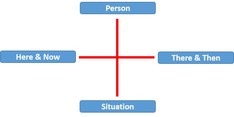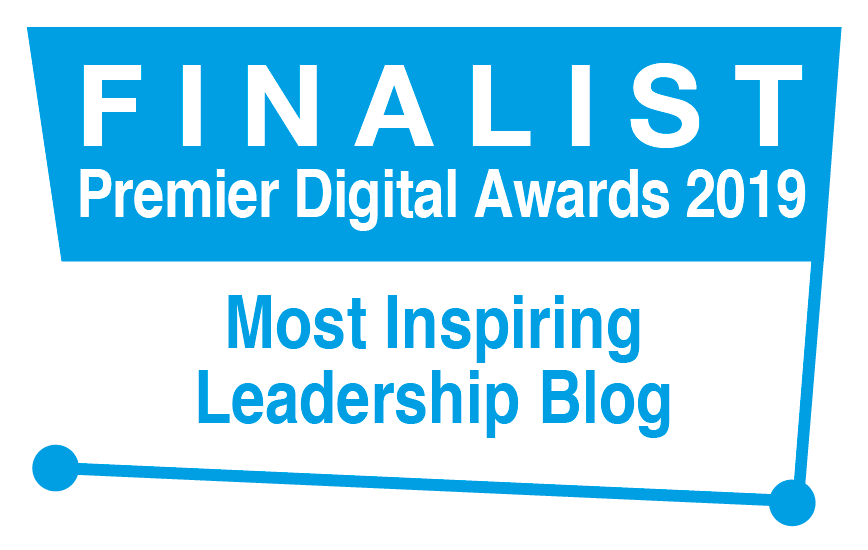|
Conventional wisdom tells us this: if we acquire more resources, we can do more and achieve more. Correspondingly, if we have less, we can do less and achieve less. It’s as if there’s a direct 1-2-1 causal relationship between resource and ability. The language we use in organisations often reinforces this view. We grow and shrink our ‘human resources’ according to the number and size of jobs that need to be done, tasks that need to be performed. It’s a linear logic. And it’s wrong.
Let’s flip this around a bit. A charity plans to run a leadership development programme but loses the funding to do it. It lost the resource so lost the programme, right? No, it explored alternative ideas and found a commercial organisation that was willing to run a high quality programme for it pro bono. It satisfied the charity’s need for a programme and the commercial organisation’s desire to support ethical work in the community. A great outcome for both parties. A win-win solution. So what made the difference? Was it a shift in resources - or a shift in thinking? Here’s the thing: ‘How else might we do this?’ invites lateral thinking, creative ideas and innovative approaches. It takes us away from acquiring more resources and towards becoming more resource-ful. It moved this charity away from, ‘How can we get more money to support our work?’ towards, ‘Who shares similar passions and interests?’ and, ‘What might be possible to achieve our mutual goals?’ This is, of course, the domain of agile thinking. As environments become increasingly volatile, uncertain, complex and ambiguous (VUCA), we need to think ever more creatively, adaptively and resourcefully. This implies a fundamental paradigm shift away from human resources and towards resource-ful humans. It means shifting our attention beyond solving the immediate issue to developing critical thinking, creative ideation and reflective practice. How do you do it?
41 Comments
This is a place where Gestalt and Social Constructionism meet. ‘Ge-what and what?’ Already confused? You could well be. I’ll have a go at explaining it. I discovered these words whilst studying organisational and coaching psychology. They arise out of a background, a field of research, experience and practice where psychology and philosophy dance together to create meaning. They have become words that I love, carrying all kinds of exciting insights, ideas and potential.
Yet my point is that they only hold meaning, evoke a response, against a backdrop. My experience and understanding could be very different to yours and that will influence what we each notice, what sense we make of it and how we feel when we encounter it. So, for instance, if you are feeling irritated now by my use of academic-sounding language, your focus is likely to be on me, on my words, rather than on the personal background and experiences that influence your reaction. Gestalt describes this phenomenon as ‘Figure’ – for argument’s sake, the thing we notice, that is holding our attention, in the moment, and ‘Ground’ – the background to the ‘Figure’ that we are not noticing. Similarly, Social Constructionism proposes that it’s the hidden subconscious backdrop of our beliefs, values, interests, experiences etc. that create meaning and make sense of that which we notice and focus on. And, for most of the time – the background is completely invisible to us. So here are some ideas: You’re leading a team and people get stuck, fixated on an issue. Why is it so important to them? Check out the invisible backdrop as a way of resolving it. You’re facilitating an organisation through change and things start to feel derailed. Surface underlying cultural constructs and assumptions to enable a shift. You’re coaching a client who presents an issue, a relationship, as if it exists in a vacuum. Explore the invisible context, the ‘what else’, to create a solution. ‘What language does a racoon speak?’ This young girl looked at me intently, clearly expecting an answer. I felt compelled to respond quickly, in the moment. ‘I don’t know. I guess…Racoonish?’ That seemed to satisfy her curiosity, at least for now. The thing that struck me most in this brief encounter was her wide-eyed, uninhibited enthusiasm for exploration, discovery and learning. She clearly felt unfettered by adult-type assumptions, e.g. by a belief that she should already know.
I sat in an HR team meeting where participants became preoccupied with how best to store annual leave request forms. They proposed various systems and procedures and evaluated them for their relative pros and cons. As the conversation progressed, along with the time it was taking for the team to resolve this, I felt increasingly curious and bemused and so interjected, quite innocently, ‘Why do you keep annual leave forms?’ Blank faces all around. Oh. End of that item. Move on. But what was going on here? These were bright people in professional roles. A real risk is that ‘professionalism’ can lead to ever-increasing demands for sophistication. Instead of asking simple questions, seeking simple solutions, we can become too complex, too complicated and miss key issues and ideas that lay hidden in plain sight. We associate child-likeness with childishness and therein lies a big mistake and a lost opportunity. Jesus said, ‘Be like children’. I say, ‘Amen.’ So here is a suggested antidote. A colleague describes coaching as the ‘art of the obvious’. There is important truth in that. When we face a situation, whether in leadership, OD or coaching, ask, ‘What would a child ask?’ (or even better, ask a child), ‘What’s the most obvious question that we’re not asking ourselves?’ e.g. ‘Why on earth are we doing this?’ Be willing to laugh and experiment too: ‘What would be the most radical, unorthodox, playful, creative solution to this?’ Give it a try! I woke this morning with an image of a person in a wheelchair in mind. Next, a flashback to social services many years ago. We were trained there to crouch or kneel when speaking with a person in a wheel chair, not to stand over them. It was about showing empathy, respect, meeting the person as a person, not ‘looking down on’ – in both literal and metaphorical senses. It reflected profound humanistic values of social work and community development philosophy and practice.
It’s only a short step from there for me to images of Jesus: God meeting us where we are, kneeling down to wash his disciples’ feet. I worked with a Christian organisation where the CEO, Gordon Holloway, made it his personal mission to know every one of its 1,700 employees, scattered throughout the UK, by name. He would spend time e.g. on reception, simply to experience how life and work were for ordinary staff. He modeled humility and servant leadership beautifully. But what does this all mean for leadership, OD and coaching in our own contexts? How are we, in practice, to marry up worthy ideals like this in the midst of the very real competitive environments, complex situations, tight budgets and tough decisions we face? Should we not focus more on efficiency and pragmatics than ethics, do whatever it takes to get the job done? Is the luxury of ‘meeting people as people’ a great ethic but one we cannot really afford to indulge in? Kimsey-House’s Co-Active Leadership and Arbinger’s Leadership and Self-Deception pose a deeper question: what kind of people, relationships and organisations do we want to be? If, e.g. I’m managing or coaching you vis a vis your performance, whose attitude and ‘performance’ do I need to pay attention to first? If I take a stance alongside you, don’t stand over you, what difference does that make to how we feel, who we become, what we achieve – and what becomes possible..? What do you really believe? It’s sometimes hard to know. We can believe something absolutely, with real passion and conviction, and yet act completely differently. The really weird thing is that we can convince ourselves that we’re living consistently with what we believe and yet the behavioural evidence, the decisions we take, the time and energy and resources we spend on people and things, can tell a very different story. Our human ability to deceive ourselves is quite remarkable.
Against this backdrop, words like integrity, genuineness, authenticity and congruence spring to mind as a stark contrast, posing a powerful and deep challenge to who we are and how we conduct ourselves in the world. We tend to think of these words as inner qualities, personal attributes, the idea of someone walking their personal talk whether anyone notices it or not. Yet they are often formed, outworked and sustained in the context of complex situations and relationships. In this sense, we could consider the integrity phenomenon as having social and cultural as well as personal dimensions. It’s about the individual but it’s not only about the individual. So we can ask: Who best models integrity for us? If we live seek to live with integrity in all aspects of our lives, what impact and influence does that have on those around us? What cultural beliefs and values nurture and support it? What social conditions provoke and inspire it, often against all the odds? What does this mean for leaders, OD and coaches? Here are some ideas: 1. Clarify our beliefs and values: what matters most to us? 2. Invite people to support and challenge us when we risk dissonance, self-deception or slip up on route. 3. Model, inspire, support and affirm integrity in behaviour, relationships, decision-making and culture. 4. Support and challenge, not collude, when working with clients. 5. Love, honour –and forgive – when we and others get it wrong. It’s tempting to think the world has gone crazy. A crisis in one place followed in quick succession by a crisis somewhere else. Yet situations and events that appear completely unrelated can look mysteriously connected once we pause, step back from the dramatic media rhetoric and look more deeply. ‘What is really going on here?’, ‘What is influencing what?’, 'What patterns and links are forming?'
McDermott & O’Connor in ‘The Art of Systems Thinking’ distinguish between: simple complexity (e.g. a car engine that is complicated because it has numerous parts - yet it parts interact predictably and in fixed ways) and dynamic complexity (e.g. human systems such as families, teams, communities, nations etc. where different parties not only interact but change and influence each other). Dynamic complexity at a global level is being accelerated and amplified by technology and social media that enable people to connect, interact and influence each other faster than ever before. As Wheatley explains in ‘Leadership & The New Science’, however, this does not necessarily create ever-increasing chaos. It’s as if even complex human systems find their own equilibrium and flow. So what does this mean for leadership, OD and coaching? Firstly, look beyond the issue itself to inquire into ‘what else’ is creating and sustaining the conditions for it to arise. Secondly, view human systems in terms of relational influence rather than mechanics. Thirdly, be curious and responsive to what and where energy is emerging and shifting. Fourthly, be ready to let go - and dance! A coaching conversation can bring to mind the image of a 1-hour, serious conversation. Two people sitting in chairs, facing each other at 135-degrees, one talking, the other leaning forward, listening. The client speaks slowly, thoughtfully. The coach holds eye contact, empathetic expression, nods occasionally. The atmosphere is, well...reflective. Now imagine the same scenario in bright daylight, vivid colour, creative energy, physical movement.
Example: Sarah stood there, told me she was stressed about a forthcoming meeting. She looked tense, slumped shoulders. I said, ‘Stressed’ back and mirrored her posture. I asked, ‘How would you want to be at the meeting?’ Sarah responded, ‘More confident, full of life.’ I replied, ‘Show me – full of life’. She jumped up and down on the spot, grinning and arms waving. I did too. I asked, ‘Do you know what you need to do now?’ She said, ‘Yes.’ Dave was worried about conflict with a colleague. As he spoke about it, I noticed his arm moving as if writing something in thin air. I mirrored the movement, in silence. He looked surprised. ‘What does that mean?’, I asked. Dave looked thoughtful. ‘I take notes when we meet to avoid looking at him.’ ‘What would you be doing if you had a great relationship?’ Dave looked brighter so I asked, ‘Do you know what you need to do?’ He replied, ‘Yes.’ Don’t get me wrong. There is a time and a place for deep, thoughtful conversation. We can’t solve every situation with a simple, quick solution. Yet how far do we fall unquestioningly into patterns of behaviour and practice simply because they feel comfortable, normal and predictable for us? How far do we always insist on a full-course meal when something light, crispy and spicy could be, for the client, refreshing, satisfying, life-giving – and enough? How do you spot, address and avoid falling into the delusion trap?
The problem with being deluded is that, when we’re in a deluded state, we don’t know we’re deluded. The word delusion comes from the same Latin root as deceived. If we knew we were being deceived when we are being deceived, we wouldn’t believe that which deceives us. So delusion can be something about being deceived and about deceiving ourselves too. It carries negative connotations of being firmly convinced of something that doesn’t correspond with reality or truth. The recent UK referendum on EU membership drew this phenomenon into sharp focus. After the results were announced, people on both sides of the debate commented that they were completely bemused that people on the other side had voted differently. Given that, in each side’s view, the ‘correct’ decision was clear, unambiguous and self-evident, they concluded that the most plausible explanation for the difference was that people on the other side had somehow been deceived. This begs interesting questions about who was deluded in making such claims and how we could know for sure what the reality and truth were in order to decide. Is there a definitive, unequivocal truth to be unearthed in such circumstances? Or is what appears to us as truth a reflection of how we construe complex and ambiguous ‘facts’ psychologically and culturally to create a coherent narrative that resonates with our beliefs and feelings and provides a sense of meaning for us? There are two important signals I have found it useful to look out for. If a person states an opinion as fact, I will challenge and invite them to personalise it: e.g. ‘This meeting is boring’ to, ‘I’m feeling bored in this meeting.’ If a person uses a word or phrase like, ‘Clearly’ or, ‘Obviously’, I will challenge them to reframe and personalise it too: e.g. ‘Clearly’ to, ‘It seems clear to me that’. This simple, practical technique can create a very significant shift in awareness, perspective – and choice. Jackie LeFevre of Magma Effect is an inspiring and thoughtful guru in the values-related field. One of the things Jackie talks about is the importance of exploring the values and beliefs that lay behind people’s actions and behaviours. Two people could behave the same way but with very different reasons for doing it. Dave believes that people should arrive at meetings on time. For him, it’s about ensuring that time spent at meetings is efficient and effective. Sandra also believes it’s important to arrive on time. For her, it is about showing personal respect for colleagues in the room.
Why is this important? Covey in The Speed of Trust observed that, ‘We judge ourselves by our intentions and others by their actions.’ The risk here is that I assume your intention from your behaviour then respond and relate to you as if my assumption (that is, my own belief about you in that situation) is true. What is more, we tend to notice things that confirm and reinforce the belief we already hold and don’t notice things that would challenge or contradict it. All kinds of misunderstandings can occur and these can prove limiting or damaging to relationships. This tendency is exacerbated if we are feeling tired, pressured or stressed. Somebody walks past my desk who normally stops and speaks to me. This time, they don’t speak. In fact, they don’t even look at me. I begin to hypothesise. If I’m already feeling anxious about the relationship, I may start to dream up an elaborate fantasy: ‘I’m sure they’re angry with me.’ ‘It’s because they didn’t like that email I sent.’ It’s a classic example of cognitive distortion. If we notice we are doing it, e.g. if we think we are reading the other person’s mind, it can really help if we simply stop and…breathe. I discovered a useful ‘3 Hypotheses Technique’ in Latting & Ramsey’s Reframing Change that can be used to surface such assumptions and open up alternatives. The first step is to take note of what we assume the person’s action or behaviour means. The second is to assume the person has a positive intention. The third is to assume the person is being driven by external circumstances. If we are able to entertain the possibility that more than one of these could be true, it can create sufficient psychological and emotional shift to enable us to respond with far greater reality and freedom. If you love 2 x 2 models, you will love this. Maybe. I led a group supervision session this afternoon for coaches throughout the UK. As a prompt for contracting, signposting and focusing, I drew a simple grid with 2 polarities: (a) Person – Situation and (b) Here & Now – There & Then. We can think of 'Here & Now' as in the room; 'There & Then' as in the situation or story. This creates 4 permeable zones of interest and inquiry for supervision and coaching and potential prompts for reframing. I’ll offer some sample questions below that can be used or adapted in each zone: Person – Here & Now. How is this situation impacting on you here and now? As you talk about this now, what stands out as most important to you? What are you aware of here and now? How are you feeling now as you talk about this? Which aspect of this would you like to focus on here and now? Person – There & Then. What role are you playing in this situation? What responsibility are you taking for what’s happening? What outcome are you hoping for in this situation? What are you noticing and not-noticing in this situation? What critical strengths is this calling for from you? Situation – Here & Now. What is the current situation? Who is influencing, involved in or impacted by the situation and how? What opportunities and challenges are emerging in this situation here and now? Which aspects of the situation are most important to pay attention to at the moment? Situation – There & Then. What’s the back story to this situation? What goals and outcomes were identified at the outset? If this project was to be successful, what would success look and feel like for different stakeholders? What professional and policy issues will need to be taken into account? |
Nick WrightI'm a psychological coach, trainer and OD consultant. Curious to discover how can I help you? Get in touch! Like what you read? Simply enter your email address below to receive regular blog updates!
|




 RSS Feed
RSS Feed